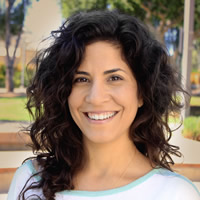 "In this video, I talk about what helped me speak with an American accent and how I became fluent in English."
"In this video, I talk about what helped me speak with an American accent and how I became fluent in English."
Presenter bio – Hadar Shemesh's company is called The Accent's Way where she teaches people to speak confidently with an American accent. Her website is TheAccentsWay.com. Her YouTube channel is here.
Watch the YouTube video by Hadar Shemesh (photo, left) . . .

 "Did you know that you listen with cultural ears and see with cultural eyes? What I mean by that is that how you interpret what is being said or written has been culturally conditioned. When listening and seeing you not only decipher the meaning of the words but you also interpret the tone of voice, body language and sentence form. I call those four elements — content, tone, body language, form — the dance of language. No matter what language is being used, you are always interpreting the dance from your own cultural point of view."
"Did you know that you listen with cultural ears and see with cultural eyes? What I mean by that is that how you interpret what is being said or written has been culturally conditioned. When listening and seeing you not only decipher the meaning of the words but you also interpret the tone of voice, body language and sentence form. I call those four elements — content, tone, body language, form — the dance of language. No matter what language is being used, you are always interpreting the dance from your own cultural point of view."


